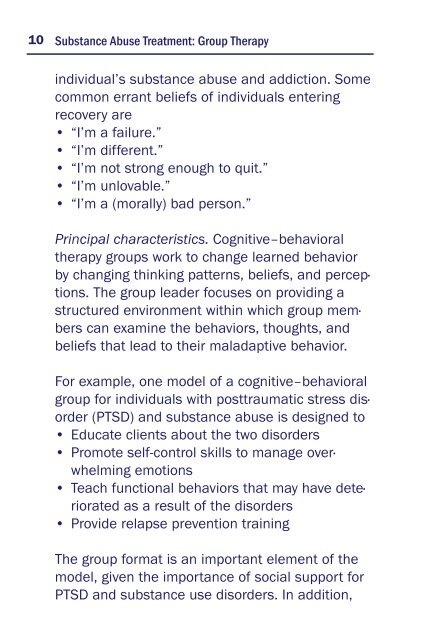Quick Guide for Clinicians - SAMHSA Store - Substance Abuse and ...
Quick Guide for Clinicians - SAMHSA Store - Substance Abuse and ...
Quick Guide for Clinicians - SAMHSA Store - Substance Abuse and ...
Create successful ePaper yourself
Turn your PDF publications into a flip-book with our unique Google optimized e-Paper software.
10 <strong>Substance</strong> <strong>Abuse</strong> Treatment: Group Therapyindividual’s substance abuse <strong>and</strong> addiction. Somecommon errant beliefs of individuals enteringrecovery are• “I’m a failure.”• “I’m different.”• “I’m not strong enough to quit.”• “I’m unlovable.”• “I’m a (morally) bad person.”Principal characteristics. Cognitive–behavioraltherapy groups work to change learned behaviorby changing thinking patterns, beliefs, <strong>and</strong> perceptions.The group leader focuses on providing astructured environment within which group memberscan examine the behaviors, thoughts, <strong>and</strong>beliefs that lead to their maladaptive behavior.For example, one model of a cognitive–behavioralgroup <strong>for</strong> individuals with posttraumatic stress disorder(PTSD) <strong>and</strong> substance abuse is designed to• Educate clients about the two disorders• Promote self-control skills to manage overwhelmingemotions• Teach functional behaviors that may have deterioratedas a result of the disorders• Provide relapse prevention trainingThe group <strong>for</strong>mat is an important element of themodel, given the importance of social support <strong>for</strong>PTSD <strong>and</strong> substance use disorders. In addition,
















